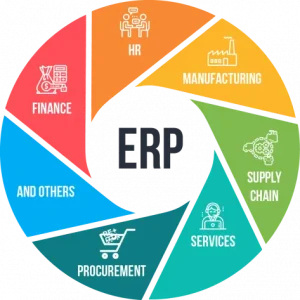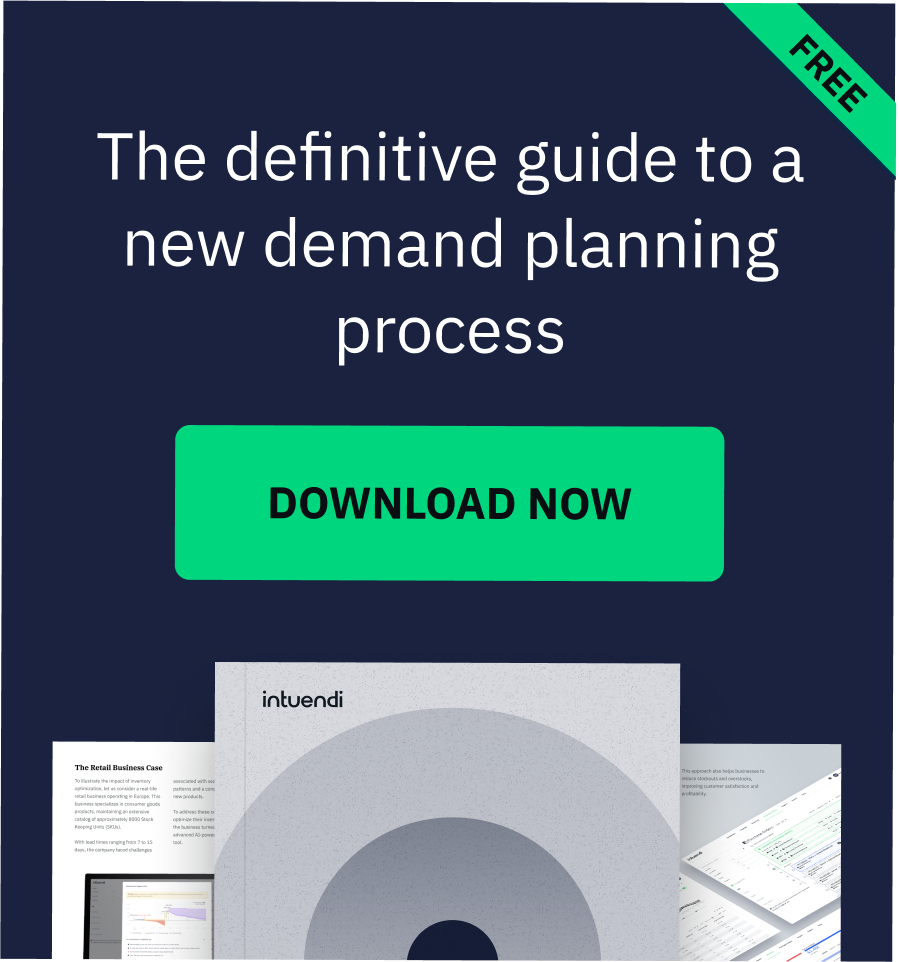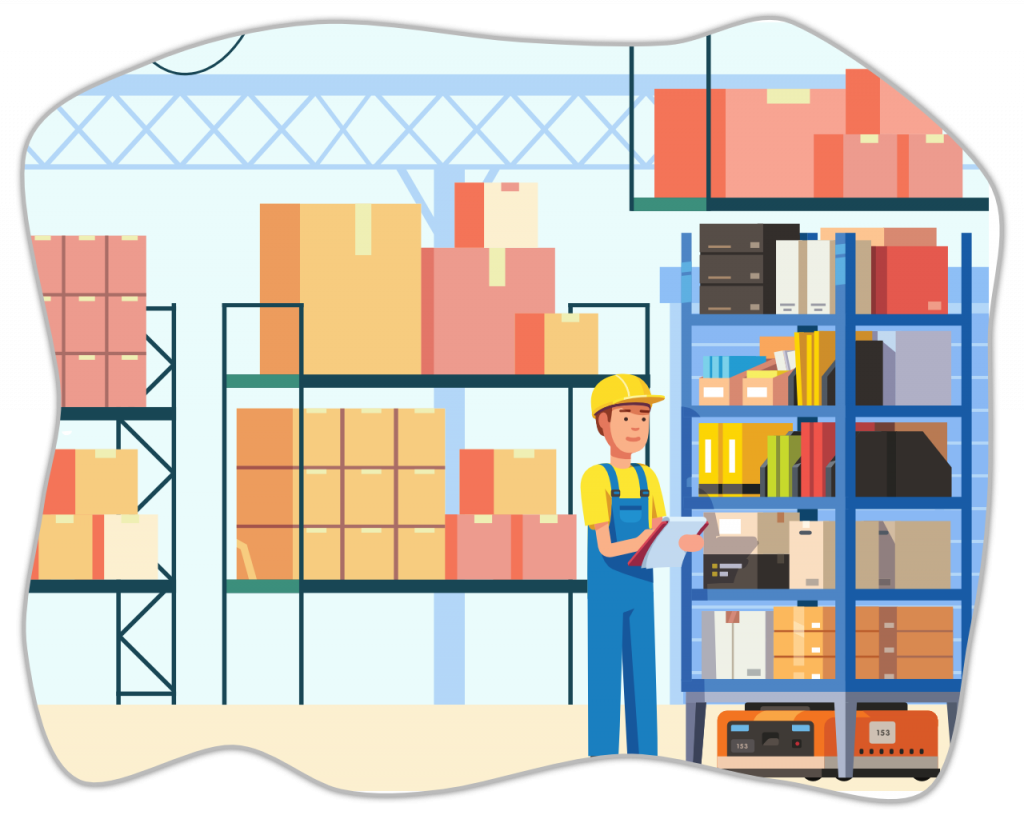Enterprise Resource Planning (ERP) software improves the efficiency of operations in production-based or distribution businesses. It works by merging separate applications for accounting, procurement, project management, human resources, risk, and supply chain activities into one platform—and consolidating all information under one umbrella.
What is Enterprise Resource Planning (ERP)?
So what are ERP systems? Enterprise Resource Planning (ERP) is the integrated management of main business processes, supported by software and technology. ERP software is usually referred to as a category of business management software—typically a suite of integrated applications—that an organization can use to collect, store, manage, and interpret data from many business activities. These systems can occur locally or can be cloud-based.
Instead of consulting five (or more) technologies for an answer, a modern enterprise resource system can tie your primary business functions together through a single source. Selecting the correct system removes the disconnect between front-of-house and back-of-house and enables you to access the latest data in real time while collaborating with your team effortlessly.

Users can manage, edit and share product information from multiple sources to avoid data silos that usually result in content loss, duplication, or inaccuracies. This way, you can increase your data quality and make more confident, data-driven decisions.
Structure and Functionality of an ERP System
Enterprise Resources Planning systems (ERP) are comprehensive software solutions designed to streamline and integrate various business processes and functions within an organization. These systems enable efficient communication and data sharing across different departments. ERP Systems have various components that are integrated to achieve a coherent system.
1. Database: The core of an ERP system is a robust and centralized database. This database stores data from various departments, which is organized and categorized to facilitate easy retrieval and reporting.
2. Modules: ERP systems consist of various modules, specifically tailored to certain business functions such as:
- Finance and Accounting: Handling financial transactions, general ledger, and financial reporting.
- Human Resources: Dealing with all employee information, such as payroll, benefits, and workforce planning.
- Supply Chain and Inventory Management: Aids in controlling inventory levels, order tracking from supplier to manufacturer to warehouse, and optimizes the supply chain throughout.
- Production and Manufacturing: Manages production schedules and quality control.
3. Integration: A key feature of ERP systems is their ability to integrate data and processes across all their modules. Integration ensures that when data is updated in one module, it is synchronously reflected in other related modules. Modern ERP systems have open API technology allowing for seamless integration with third-party software like Intuendi-AI.
See if Intuendi has an integration with your ERP system here:
4. Workflow Automation: ERP systems often include workflow automation capabilities that help organizations optimize and automate business processes. Workflows are responsible for defining the sequence of tasks and actions that should occur when a specific condition is met.
5. Security and Access Control: Security measures are implemented in ERP systems to protect sensitive data. Access control mechanisms ensure that only authorized personnel can view or modify certain information. This is vital for keeping data confidential.
6. Scalability and Customization: ERP systems should be scalable and customizable to accommodate an organization’s growth, specific needs, and industry requirements.
7. Mobile and Cloud Capabilities: Modern ERP systems often offer mobile and cloud-based solutions, allowing employees to access and update information remotely.
8. User Interface: The user interface (UI) is designed to be user-friendly and intuitive, allowing all employees to easily understand and interact with the system
Advantages and Benefits of ERP
Generally speaking, more companies would run at a loss if it weren’t for an ERP system.
For example, one study finds that, on average, an ERP can reduce overall operational costs by 23% and administrative costs by 22%.
Not to mention, people spend more than 90% of their week on data-related activities, which, if you read between the lines, is a massive loss in time to market that could be spent elsewhere.
Enterprise Resource Management systems offer numerous advantages for organizations across various industries and sizes. Some of the key advantages of implementing an ERP system include:
Data Management: ERP systems make the process of managing and ensuring data accuracy easier through centralizing and standardizing data. Not only does this allow for reduced data redundancy and errors, but also lessens the need for manual data entry.
Decision-Making: Decision-making is improved with ERP Systems, as they provide real-time access to data, which allows for more up-to-date information. More accurate analytics help organizations respond to changing market conditions and make informed strategic choices.
Streamlined Processes: It has been well-established that automated business processes lead to efficiency and productivity. The automation in ERP systems works to reduce manual work.
Read our case study on how Intuendi helped one US based company streamline S&OP with a seamless integration with SAP ERP systems.
Cost Reduction: By eliminating inefficiencies, reducing errors, and improving inventory management, ERP systems can lead to significant cost savings. Furthermore, these same systems aid in informing on better supplier contracts.
Inventory Control: As established, ERP systems provide real-time visibility into inventory levels. This provides organizations with a stronger ability to optimize stock levels and reduce carrying costs.
Improved Supply Chain Management: An improved supply chain is something that all businesses should constantly work towards. This can be made more of a reality with the help of ERP systems, which can reduce lead times, reduce costs, and improve supplier relationships.
While this tool is beneficial for many teams, ERP systems have yielded the biggest results in the following industries:
Commerce: In retail, be it online or in-store, you’re required to deliver exceptional customer experiences in a timely manner. If you’re manually processing and emailing spreadsheets back and forth, you’re bound to encounter duplicates, mistakes, and poor customer service. Thanks to modern ERP systems, commerce businesses are able to scale by streamlining activities, unifying data, and providing an exceptional customer experience. You can reduce overheads and increase sales by managing marketing and sales assets, inventory management, fulfillment, and much more in one place.
Finance: When you’re required to perform manual data entry on accounting or any financial reporting, the last thing you need is a typo. Not to mention, scattered spreadsheets don’t allow you to see an overview of your finances, which means that you cannot rely on your data. What if there are duplicates? An ERP enables you to manage all this information in one centralized place so that it’s easier to make decisions on demand planning and forecasting.
Human resources: People management can get overwhelming when you’re juggling payroll, leave schedules, recruitment, legal documents, training, and much more. You can automate certain tasks and anticipate issues by managing data in one place. This will free up time to improve other areas of HR.
Manufacturing: In manufacturing departments, there’s a constant flow of data between internal employees and external suppliers, distributors, resellers, and the list goes on. If you rely on manual data entry, you cannot monitor and respond to sudden changes in the supply chain. Not to mention, you can also look at costs holistically and optimize production to increase profits.
Supply Chain: A critical area of the supply chain is inventory management. This department sits on a goldmine of information, for example, the sales performance of items, purchasing, and logistics. This information filters through to sales and marketing departments, allowing teams to make more accurate business decisions. By tracking all this information in an ERP system, you can minimize costs and maximize working capital to aid business efforts.
Types of ERP and Solution Providers
There are many solutions out there, each with its own costs and benefits.
When choosing a system, you will need to unpack each option’s cost, customization, complexity, and implementation setup and measure them against your business size and needs. For example, the different types of ERP models can be cloud-based, on-premise, or hybrid. But they all promise improvement and resiliency.
In terms of the top industry players, you are looking at:
- SAP B1, R/3, and S/4HANA
SAP R/3 uses a three-tiered structure of the database, the application server and the user interface. Meanwhile, S/4HANA leverages the cloud and uses the HANA database. - Oracle Cloud ERP:
Oracle Cloud Enterprise Resource Planning is a cloud-based ERP software application suite introduced by Oracle Corporation in 2012. Oracle ERP Cloud manages enterprise functions including accounting, financial management, project management, and procurement. - Brightpearl
On Brightpearl, all sales channels, warehouses, customers, and suppliers are interconnected in one central hub, and data is synced in real time when orders are picked, packed, and shipped - NetSuite ERP
NetSuite ERP is an all-in-one cloud business management solution that helps organizations operate more effectively by automating core processes and providing real-time visibility into operational and financial performance - Microsoft Dynamics 365 and Microsoft Dynamics GP
Dynamics 365 is a suite of interconnected business applications to satisfy a wide range of business needs. Each application is modular and can be connected with existing tools and systems to extend their capabilities and build a comprehensive business tech stack. Dynamics GP is similar but is designed to work on-premises.
Implementing an ERP System
Implementing an Enterprise Resource Planning (ERP) system involves several phases and key processes. These phases help organizations plan, configure, deploy, and optimize their ERP system. The typical phases and key processes in the implementation of an ERP system are:
- Initiation and Planning: This involves selecting vendors, creating a budget, and beginning to charter the project.
- Business Process Analysis: This involves an assessment of the current business state, as well as a gap analysis, aiding in providing an idea of how to move forward, and creating a picture of a company’s future state.
- System Selection and Customization: Selecting a specific software and customizing it to better suit business needs.
- Data Migration: This includes data cleansing and verification.
- Testing: This involves the testing of various features: unit, integration, and user acceptance.
- Training: This step involves training those who will be using the ERP system. Deployment follows immediately after training has been completed.
- Optimization and Continuous Improvement: After input from users has been received, changes are implemented to ensure optimization and the continuous flow of improvement for ultimate efficiency.
Future of ERP and Market Trends
The Enterprise Resource Planning (ERP) industry is continually evolving to satisfy the changing needs of businesses in an increasingly digital and competitive landscape. Several emerging trends are shaping the future of ERPs as businesses continue to enhance efficiency, improve decision-making, and remain agile.
The adoption of cloud-based ERP solutions has allowed organizations to access their ERP systems through the cloud rather than traditional on-premises installations. Cloud ERP offers flexibility, scalability, and cost-effectiveness. Consequently, ERP systems are more accessible for businesses of all sizes.
AI and ML are being integrated into ERP systems for more data-driven decisions, trend prediction and analysis, and improved customer experiences, enhancing the overall intelligence of ERP systems. The cyberworld can be extremely daunting for a business, as hackers stand at every e-corner. ERP vendors are thus placing increased emphasis on security features to help protect data and reduce the risk of cyber threats.
ERP Integration with Third-Party Software
Modern ERPs use open APIs to allow for the secure exchange of data with third-party tools. These third-party software may include WMS (Warehouse Management System) for warehouse management, MES (Manufacturing Execution System) for manufacturing and production, or indeed SCM (Supply Chain Management software) or demand planning software like Intuendi.
Learn more on how Intuendi can integrate with your ERP






